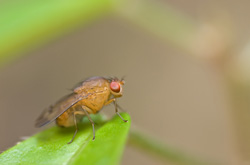Making sense of the sense of smell
Smell is an underrated yet very important sense. While a good deal of research has been performed in this field, we still do not completely understand how different smells are processed and stored by the brain. Since the human brain is so complex, it makes sense to initially study these aspects in simpler organisms. The EU-funded Mnemosmell project targeted the common fruit fly, Drosophila melanogaster to unravel the mechanisms of odour coding and scent tracking. Mnemosmell is a team of experts in electrophysiology, molecular genetics, behavioural analysis and computational modelling. They are focusing on the process of chemotaxis, which drives an organism's movement in response to chemicals in the surrounding environment. In order to gather information about how the olfactory system chooses a direction based on input signals, a new electrophysiological laboratory set-up has been created. New software to analyse the behaviour of the fruit fly larvae is also being developed. Mnemosmell and other research projects supported by EU funding are helping us unravel the considerable mystery of how the brain works. Applications in the biomedical world are set to include the development of therapies for neurological damage to the central nervous system.







